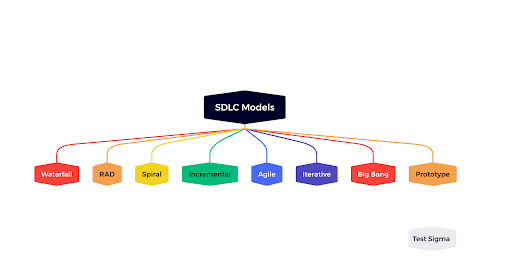
Product roadmaps help organizations create a vision for product and software development cycles.
The product roadmap is exactly as it sounds, it’s a document that helps layout the product vision for a period of time, typically 12 months. Before we discuss about details of product roadmaps, let us discuss why they are needed and how they created.
Product roadmaps-
Product Roadmaps are important for several reasons. Most importantly, it serves as a way to communicate key product priorities with internal and external stakeholders in a digestible and understandable way. There’s no need to get into the sprint schedule and user stories. The product roadmap gives a 10,000 ft view of the product and the key areas of emphasis.
The product roadmap also helps structure team alignment on priorities. Due to the way product roadmaps are built, it shows how product priorities align with the vision and strategy. It gives various stakeholders insight and an opportunity to contribute to the key product priorities.
Product roadmaps are also used to determine product positioning. Senior management, marketing, and product team use product roadmaps to identify gaps and opportunities vs. competitors in the market. Using a strategic framework like Porter’s Five Forces or SWOT Analysis, teams can better determine which areas should be focused tot make the product more competitive over time.
While thinking about the product roadmap, it’s important to note that product roadmaps are living and breathing documents. They should always be changing according to resources available, company priorities and market conditions. Ideally, you’d want the roadmap development process to be a cycle that feeds into itself.
- Set Strategic
- Goals
- Key Product Priorities
- Prioritize Product Priorities
- Develop Roadmap
- Communicate roadmap
- Rinse and Repeat
What Goes while Building A Product Roadmap?
When building a product roadmap, there are many inputs needed to help inform the process.
Internal capacity and capabilities
What are your companies key strengths and weaknesses? Where does your company want to invest this year?
Customer or Client’s Feedback
Getting some feedback on key priorities for your main customers/clients?
Partnership input/priorities
What are some of the key priorities for partners/ what are they investing in and how might it affect your company?
User Research
Do you understand the key drivers/ needs for your user? Analytics- Do you have analytics on user behavior/ user needs? Quality user research can help identify opportunities and prioritization.
Competitive Benchmarks
What are your competitor companies planning? Where are they investing compared to your cohort?
Company Priorities
Where does the company want to focus for the next year? Any potential synergies?
By synthesizing the data from these inputs, you create top-level strategic goals that drive the major product themes from there, the major product themes drive the features that need to be implemented.
Goals
- High-level business objectives
- Keeps company focused in one direction
- Helps drive resource allocations
Themes
- High-level feature areas (Checkout, Admin, Reporting, ETC)
- Used to focus on feature research and focus work
Features
- Small and measurable
- Sprint level coordination
Most product managers start with the top-down approach when developing a product roadmap because it helps ensure major business goals drive the main themes and features.
Prioritization
Ideally, you’ll have a great list of themes driven by your key strategic goals. In the perfect world, you’re able to attack all your goals at once but realistically, you’ll need to identify which areas hold the highest priority.
There are multiple frameworks to help with prioritization. They include but aren’t limited to:
Value vs. Complexity
Value versus Complexity model; evaluate every opportunity based on its business value and its relative complexity to implement. Based on our conversations with product managers this is a common approach, and many product managers go through this assessment instinctively every day.
Buy a Theme/Feature
Often used with stakeholders and customers, buy a feature or theme is an informal activity where you assign a price to a list of features/ themes and customers allocate funds to the features/ themes based on interest and need.
Story Mapping
Breaking down themes into tasks and thinking about how each story connects to the user experience. It used a lot for identifying gaps in the MVP process.
Weighted Scoring
Product managers have developed scoring models to help them think through priorities.
Kano Model
Kano Model focuses on customer delight and investment required. Think of a graph where you’re trying to get the optimal customer delight for the minimal investment required.
Opportunity Scoring
Opportunity scoring is similar to the Kano model where you try to match the level of importance vs. customer satisfaction by scoring each of the variables from 1-10
Affinity Grouping
Affinity grouping is a great internal activity. Have everyone brainstorm opportunities on sticky notes. Then as a team, begin to group similar items together, and then name the groups. Finally, everyone on the team begins to vote on or rank the groups.
Putting It All Together
Once inputs, outputs, and prioritization are established, developing the product roadmap document allows the team to synthesize and summarize findings. Once created, the product roadmap is used to gain consensus, present product goals, and communicate key needs on a quarterly basis.
There are many product roadmap planning tools available for teams to build out and maintain the product roadmap.
Aha!
Roadmap platform is the platform that connects strategy to execution. Aha! Helps product managers in managing everything from strategy down to PR reviews.
Product Plan
Another well-designed product roadmapping software that allows teams to manage strategy and major product goals.
Airtable
A flexible tool that is the swiss army knife for product managers. Airtable does a little bit of everything from managing spreadsheets to creating tables and kanban flows.
Notion
Another flexible tool that provides various structures to help manage and display your team’s product roadmap.
Conclusion:
Product Roadmaps are not for product success, but they are essential to ensure buy-in. It’s a tool that product teams use to communicate internally and externally with stakeholders about the product vision and its goals. It is used to give transparency and gain an understanding of key priorities for the product within a given time frame.



